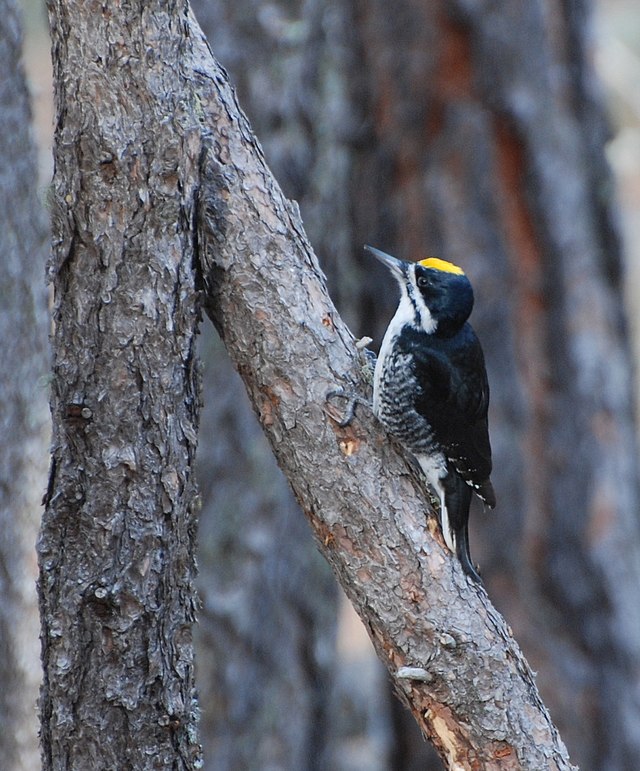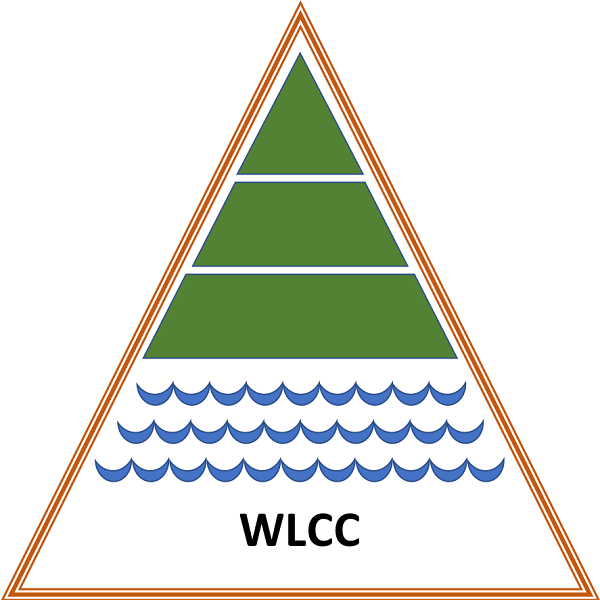Backlands Spring Migration Bird Inventory – Black-backed Woodpecker
While we await word on funding for a full bird survey of the Backlands, the WLCC is conducting its own Spring inventory under the direction of bird expert Fulton Lavender, in order not to miss the migration and nesting season. In the following weeks, we’ll be profiling some of the feathered friends spotted in the Backlands last year and this, and noting whether they are stay-at-home birds, our local migrants, or those passing through on their journey elsewhere.
Black-backed Woodpecker – March 2020

Photo: Pacific Southwest Region USFWS from Sacramento, US
This inky black bird with a sharp white stripe on his face is “nearly synonymous” with periodically burned forests like the Backlands, where it feasts on big, juicy wood-boring beetle larvae. Males sport a yellow crown patch. These enterprising birds can find burned forests within weeks of a fire, then live off the bounty of insects for the next 5-8 years. They forage right on charred trunks, which means their black plumage acts as excellent camouflage. They forage for long periods in a single spot, and thrust their long tongues into holes to flick aside sawdust and reach the grubs. They carve new nest holes for each brood, and leave lots of used nest sites for birds like chickadees, nuthatches and owls. Females lay 2 – 6 eggs per brood, and both male and female incubate the eggs, and feed the young. Threats to Black-backed woodpecker habitat include efforts to suppress forest fires, and also post fire logging to remove burned trees.
Conservation status: low concern.
Black-backed Woodpecker (Picoides arcticus) – Sighting Field Notes
Black-Backed Woodpecker. Backlands. March, 2020
Black-backed woodpecker passing through the “Flyway Corridor” to forage and nest in the fire-burnt area of the Purcell’s Cove Backlands, in Spryfield.
Credits:
Backlands Coalition – Birds and Trees Inventory, 2020
Fulton Lavender, bird expert, consultant
Martha R. Leary, inventory recorder, bird enthusiast
Information from the All About Birds website, www.allaboutbirds.org, © Cornell Lab of Ornithology
Photo: Pacific Southwest Region USFWS from Sacramento, US
